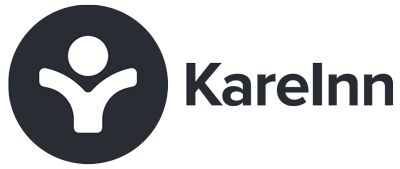Improve staff retention, improve person-centred care delivery, Dementia care best practice, reduce operational risks and reduce regulatory compliance risks are five important business priorities where data can empower evidence-based decision making in residential care homes. There are many other opportunities but these are ones that we often hear are high priorities in care homes.
Data analytics is a phrase that is sometimes used loosely but, if considered carefully, data can drive real benefit for the care industry. Other industries have already benefited. You don’t have to go far to look, just ask Tesco about their Clubcard program. The data they collected helped to keep customers loyal by personalising their customer service. The Clubcard program was so successful it increased sales four times more than they expected at launch.
Closer to adult care is healthcare. Data analytics is seen as vital to the future of healthcare in the UK,
““Better use of data and technology has the power to improve health, transforming the quality and reducing the cost of health and care services. It can give patients and citizens more control over their health and wellbeing, empower carers, reduce the administrative burden for care professionals, and support the development of new medicines and treatments.””
The healthcare industry produces masses of data. It is estimated that there is 50 petabytes of healthcare data in the world, or in other words, individual companies hold more information than the Library of Congress and the volume is expected to grow 50x by 2020. As a result healthcare data analytics, it is expected patient mortality rate can drop by 20%.
“According to an IBM study, leaders of organisations who outperform their peers are 166% more likely to use data in making decisions.”
For all the data in healthcare, the adult care industry has lots of data as well but much of it is still resides on paper. So why should residential care homes invest in digital technology that enables collection and analysis of data to support evidence based decision making. According to an IBM study, leaders of organisations who outperform their peers are 166% more likely to use data in making decisions.
However, outperforming peers is only part of the task at hand for care home owners. The breadth and depth of care industry challenges are well documented. The key question is ‘what do industry leaders do in response to the challenge?’. In 20 years time, we will know the exact answer and look back to today with the knowledge that answer was already being piloted. One care industry executive director told us that they found it hard to see a future for adult care that did not heavily feature data analytics in response to the challenges of today.
It’s not a stretch of the imagination to see how data analytics can support best practice in care homes operations. By definition, best practice includes regulatory compliance and care plan compliance. For example, simply creating a database of the activities in residents’ daily diary provides powerful data for identifying operational efficiencies. Beyond simple care plan task reminders and regulatory compliance dashboard, a large care group CEO said data is critical “…to provide central oversight of all critical care conditions in specific locations, such as pressure sores; night time falls, and drug errors.”
A similar analysis can be run for helping to increase staff retention. Analytics can be run to identify patterns indicating that a carer may be preparing to quit. It is possible that missing paperwork, late paperwork or decreasing detail of paperwork could represent potential “red flags” that indicate a manager or carer could be ready to leave. The analysis needs to be done and appropriate remedial responses designed but first, the data must be available.
“At the start of the study, there were 180,000 dementia sufferers in care homes receiving anti-psychotic medication but with best practice training they could reduce that number by as much 140,000, more than a 75% reduction!”
Another example is where data to support decisions on how to best handle the aggressive behaviour of dementia sufferers in care homes could have a dramatic impact on residents. quality of life. KareInn co-founder, John Lanyon, is involved with the Alzheimer’s Society (AS) Research Network and, in the past, they were involved in a project where they provided best practice training for responses to the aggressive behaviour of care home residents with dementia. At the start of the study, there were 180,000 dementia sufferers in care homes receiving anti-psychotic medication but with best-practice training they could reduce that number by as much 140,000, more than a 75% reduction! Real-time data on aggressive behaviour of dementia sufferers could dramatically reduce the harmful side-effects of anti-psychotic medication and better manage the experience for everyone.
According to business academic theory, Diffusion of Innovations, innovators typically represent 2.5% of the overall market. Studies show leaders are more likely to use data in their decision making. So who are the approximately 400 innovators in the UK care home industry and what are they doing with their data? These five opportunities are just a few of the possibilities. All will be revealed over time and many will be organisations that led change in the past will lead into the future but, to paraphrase William Webster, “the future is here, it is just not evenly distributed”. Opportunity for superior results to the benefit of all stakeholders is available now and now is the time to take action. If you had a digital care plan that supported best practice with supporting data evidence, shouldn’t you think of trying it today?



